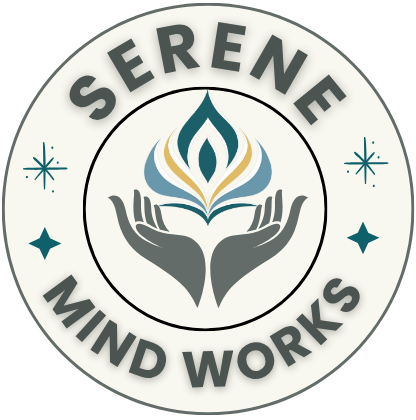
Difficult conversations are like navigating through thick fog, and knowing the terrain can make what’s murky a bit clearer. That’s where the 4 D’s come in. Divergence, Dialogue, Defensiveness, and Decision-making are the cornerstones. Divergence is all about the different perspectives that fuel these hard talks. Embracing diverse views means you’re off to a solid start.
Dialogue is the heart of any conversation. Keeping the conversation open and honest allows for real understanding, even when tensions run high. Defensiveness often creeps in when the stakes are high. Recognizing this instinct helps in addressing it proactively, leading us to Decision-making. Decision-making is where you channel all that dialogue into actionable outcomes. It’s about how you wrap things up and move forward collectively.
Then we’ve got the 3 C’s: Curiosity, Connection, and Calmness.
- Curiosity: Fuels understanding. You can’t really understand someone’s perspective if you aren’t genuinely curious about it. Staying curious encourages deeper connections.
- Connection: That’s the bridge that brings ideas and people together. Building a connection means you’re open and willing to engage.
- Calmness: Isn’t just about keeping your cool; it’s finding ways to stay grounded, making sure emotions don’t hijack the conversation.
These principles aren’t just fancy concepts; they’re practical tools. Like when a team at work comes from different worlds, and you’re the glue trying to keep things together. By leaning into Divergence and Dialogue, and balancing the 3 C’s, the rough edges start to smooth. Tension turns into talking, and before you know it, everyone’s worked out a way forward without too much drama. Harnessing these tools means you’re not just communicating – you’re connecting.
Mindfulness: A Key to Navigating Difficult Exchanges
Mindfulness isn’t just a buzzword; it’s your secret weapon when talks get tough. Transforming Conversations With Mindfulness. It’s all about staying aware and present, tuning into the current moment without letting past gripes or future worries sidetrack you. In these challenging conversations, maintaining a steady focus can turn chaos into clarity.
The perks of mindfulness in tough interactions are real. Imagine facing a heated discussion with the calm of a still pond. Being present means getting less caught up in emotions and knee-jerk reactions. You create a space where you can hear without reacting, think without judging, and respond with intention. This can transform a potential argument into a productive dialogue.
Bringing mindfulness into conversations requires some guiding principles. Start by grounding yourself before the interaction — a few deep breaths can help. Keep an open posture, show that you’re listening with your whole body, and remind yourself that it’s okay to pause and breathe. These small habits help in keeping the storm at bay.
Personal stories often highlight the power of mindfulness. Picture a situation where emotions run high, like a disagreement with a friend. By focusing on your breath, you manage to stay calm, and in turn, defuse the tension. Instead of letting the conversation spiral, centering yourself helps in steering it back to a constructive path.
Mindfulness in dialogues isn’t about winning; it’s about fostering understanding. Sometimes, just being available and aware is enough to shift the energy, like when you genuinely listen to a sibling’s frustrations instead of jumping in with advice or solutions. Mindfulness pauses judgment, allowing empathy to come through, transforming how we interact.
Three Practical Techniques for Tackling Tough Talks with Mindfulness
When conversations get sticky, having a toolkit ready can be a lifesaver.
- Active listening and staying present. Forget about what you’ll say next and truly focus on what’s being said. Nod, maintain eye contact, and offer small verbal nods like ‘I see’ or ‘Go on’ to show you’re engaged. This simple shift in attention can transform the entire flow of conversation.
- Compassionate communication techniques can make a world of difference. It’s all about expressing yourself clearly while respecting others’ feelings and viewpoints. Use ‘I’ statements to own your emotions without blaming. Say things like ‘I feel concerned when…’ instead of ‘You never…’ to invite dialogue instead of defensiveness.
- Mindful breathing and grounding exercises are the secret sauce for keeping calm under pressure. When tensions rise, take a moment to focus on your breath. Inhale deeply, hold for a second, then slowly exhale. This isn’t just about relaxation—it’s about regulating your response so you don’t react out of stress or anger. Pair it with grounding techniques like pressing your feet into the floor to stay anchored in the present.
- Evaluating the impact of these techniques shows their real power. Imagine a situation where a discussion could have escalated but didn’t because you practiced these methods. You listened actively, spoke from a place of empathy, and kept calm through breathwork. The outcome isn’t just peace in the moment but long-term relational health and understanding.
Implementing Mindfulness in Day-to-Day Interactions
After mastering mindfulness techniques, embedding them into daily communication is the next step. It’s about consistency, not just pulling out the mindfulness card for those high-stakes conversations, but making it your default setting. Practice with everyday interactions, like while chatting with colleagues about the latest project, or resolving minor issues at home.
Building a habit requires baby steps. Start with short, mindful moments during conversations. Spend a few seconds before responding, or take a quick internal scan to check how you’re feeling. Over time, these small pauses become second nature, paving the way for healthier exchanges across the board.
Barriers to maintaining mindfulness are real. Stress, old habits, and busy schedules can derail the practice. A key tip is to set reminders, like a note on your phone or a prompt by your work desk, to pause and breathe. Even a brief reset can help put you back on track.
Looking forward, fostering a mindfulness culture can make bigger changes beyond personal growth. Utilizing mindfulness in interactions contributes to more empathetic workplaces, understanding family dynamics, and healthier social exchanges. It’s about creating a ripple effect where everyone benefits from a little more attention and presence in every conversation.
